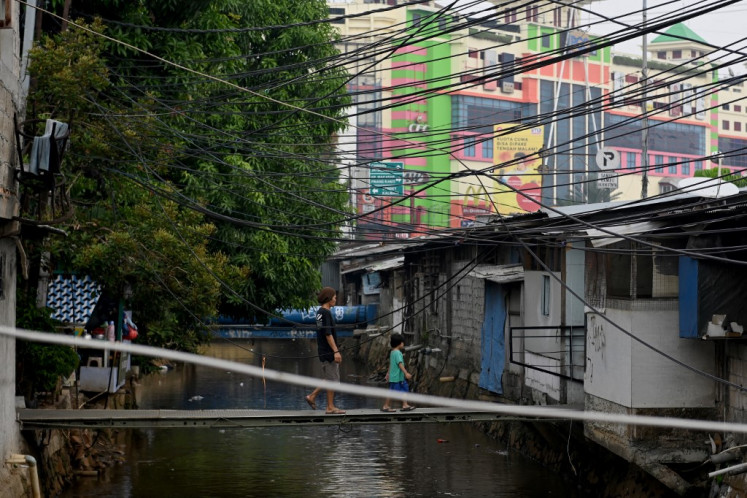Sex tourism poses threat to children
The tourism sector continues to be one of the stars of Indonesia’s economy
Change text size
Gift Premium Articles
to Anyone

T
he tourism sector continues to be one of the stars of Indonesia’s economy. But it also poses a threat to children, especially those living near tourist destinations, who face being sexually exploited.
Indonesia’s chapter of Bangkok-based NGO End Child Prostitution, Child Pornography and Trafficking of Children for Sexual Purposes (ECPAT) worked with the Women Empowerment and Child Protection Ministry in assessing seven tourist destinations, including Karangasem in Bali, throughout 2016 and 2017.
They found that sexual exploitation was committed by both foreign and domestic tourists in the seven areas that also include Thousand Islands in the north of Jakarta, Gunung Kidul in Yogyakarta, Garut in West Java, Bukittinggi in West Sumatra as well as Toba Samosir and Teluk Dalam in North Sumatra.
ECPAT also analyzed the data of 13 foreigners who were denied entry into Indonesia because of their record as child sex offenders. It found that 90 percent picked Bali as their preferred destination.
As many as 10 were from Australia, which has long been a major source country of child sex offenders to Southeast Asia, including Indonesia. Others were from China and South Africa.
Ahmad Sofyan of ECPAT Indonesia said such a worrying number of child sex offenders in tourism areas had led to exploitation, particularly prostitution.
“We’re talking about both domestic and foreign tourists,” Sofyan said on Thursday. “Some of them visited the destinations intentionally to ‘hunt’ children. Others actually came purely for vacation. But local industry stakeholders, such as hotels, allegedly offered them children for sexual purposes.”
Sofyan and his team were once in Garut for research when a hotel staff member offered them several children of various ages.
“Maybe less than one percent of tourists intentionally come [to the destinations] as child predators, but they still damage our young generation,” he said.
ECPAT’s finding was echoed by Immigration Office data that showed 112 registered child sex offenders have been denied entry into the country since January 2016. Most of them were Australians, while the rest came from the United States, France, Portugal and South Africa.
“Around 90 percent of them intended to come through Ngurah Rai International Airport in Denpasar, Bali,” the Immigration Office’s surveillance and enforcement director, Zaeroji, said.
The 2016-2017 ECPAT assessment came on the heels of research done in Lombok, West Nusa Tenggara (NTB); Kefamenahu, East Nusa Tenggara (NTT) and West Jakarta in 2015.
The assessments found that West Jakarta, Garut, Lombok and Teluk Dalam were the areas most prone to the sexual exploitation of children.
Child trafficking, online child pornography and child prostitution dominated the cases.
“Even law enforcers seem to be hesitant to take firm action against the perpetrators over fear that it may tarnish the tourist industry,” Sofyan said.
The Tourism Ministry’s Oneng Setya Harini said her office had yet to maximize efforts to prevent child sexual exploitation due to its limited authority.
“This is because the destinations are basically under the responsibility of local administrations and other ministries.
“For example, Borobudur temple [in Yogyakarta] is under the Education and Culture Ministry, while diving tourism is under the Maritime Affairs and Fisheries Ministry,” she said.
Oneng added that the government had introduced a 2010 ministerial regulation to prevent child sexual exploitation in tourist spots.
It included a campaign to educate local industry players and communities on how to create a conducive environment to prevent child exploitation.









